Meteora in Crete
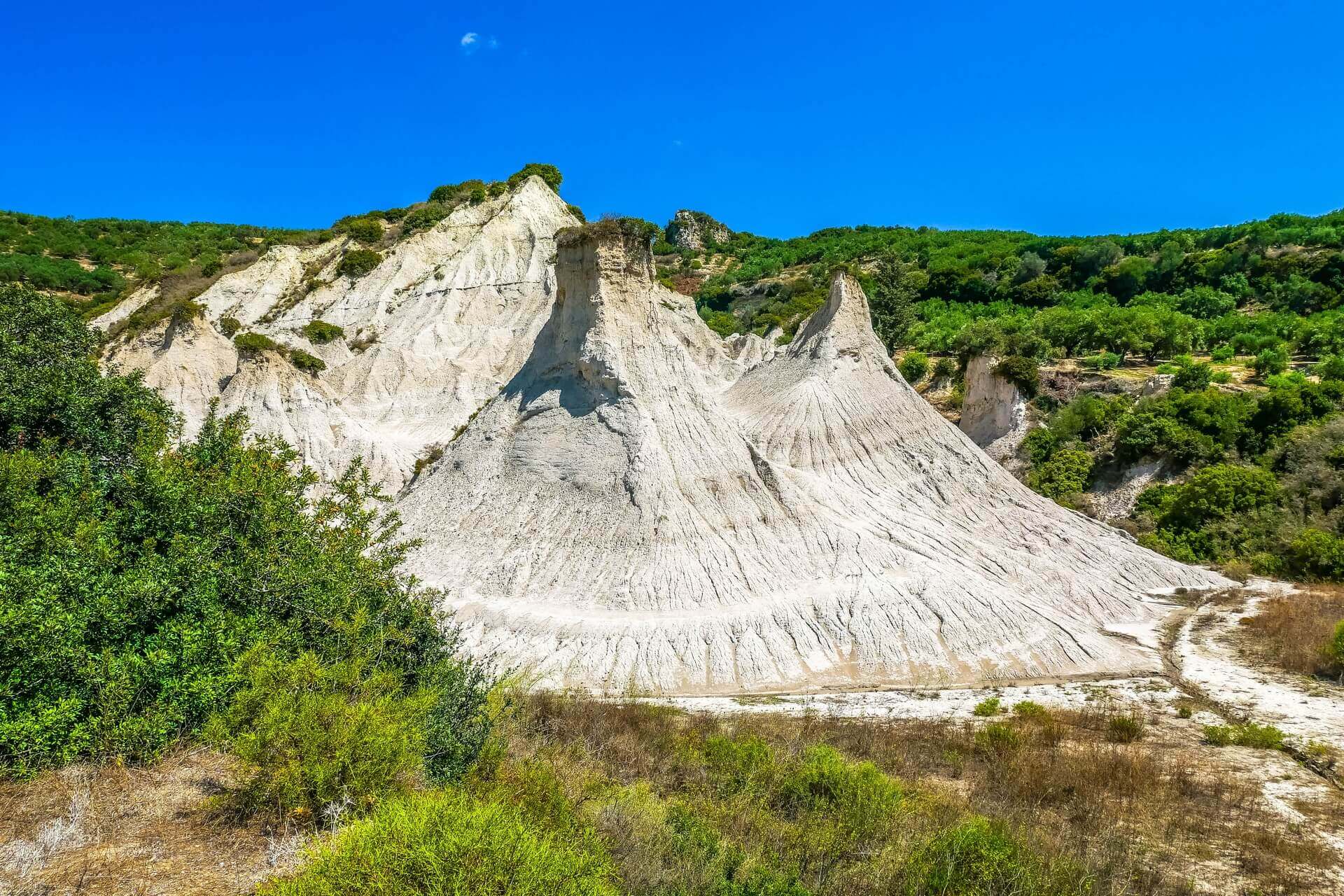

Even if you have been to Crete many times, the island will never cease to amaze you. Further evidence of this claim is near the traditional Cretan village of Potamida which is located in the Municipal Community of Kissamos. Just a few tens of meters from the village houses, in the middle of cultivated fields, a complex of unique clay mounds – Komolithoi – suddenly grows and stands out as an unusual landscape.
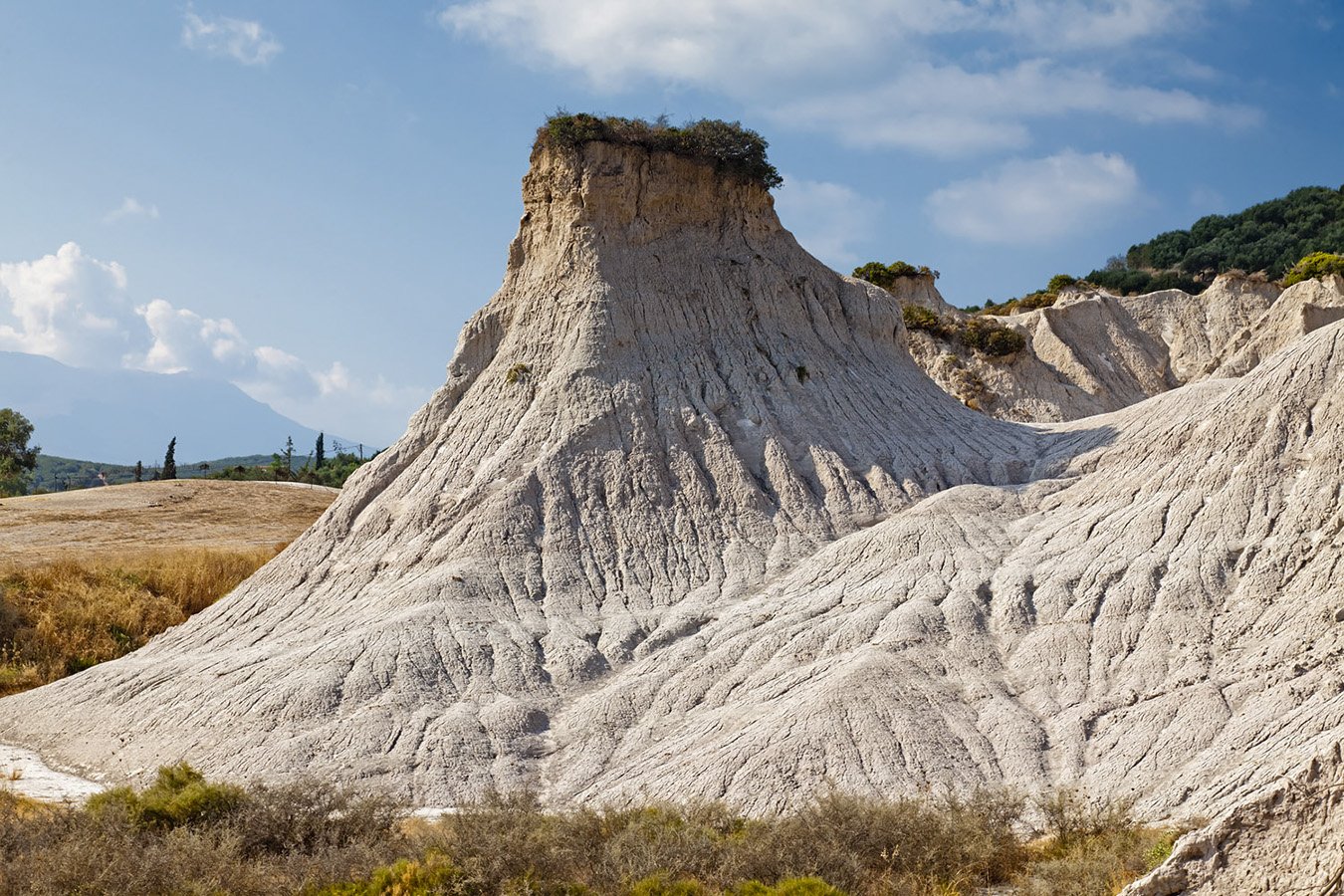
Large and small cone-shaped mounds-dunes are grouped in the valley of the Tiflos river. Their slopes are absolutely bare; and at the very top of each is sparse vegetation. In dry weather, in summer, they become bright white. It’s easy to climb and walk on a Komolithi.
“A lunar landscape … looks just unreal”, “it must have been done by ancient aliens”, “geological miracle” – this is what eyewitnesses say about Komolithoi.
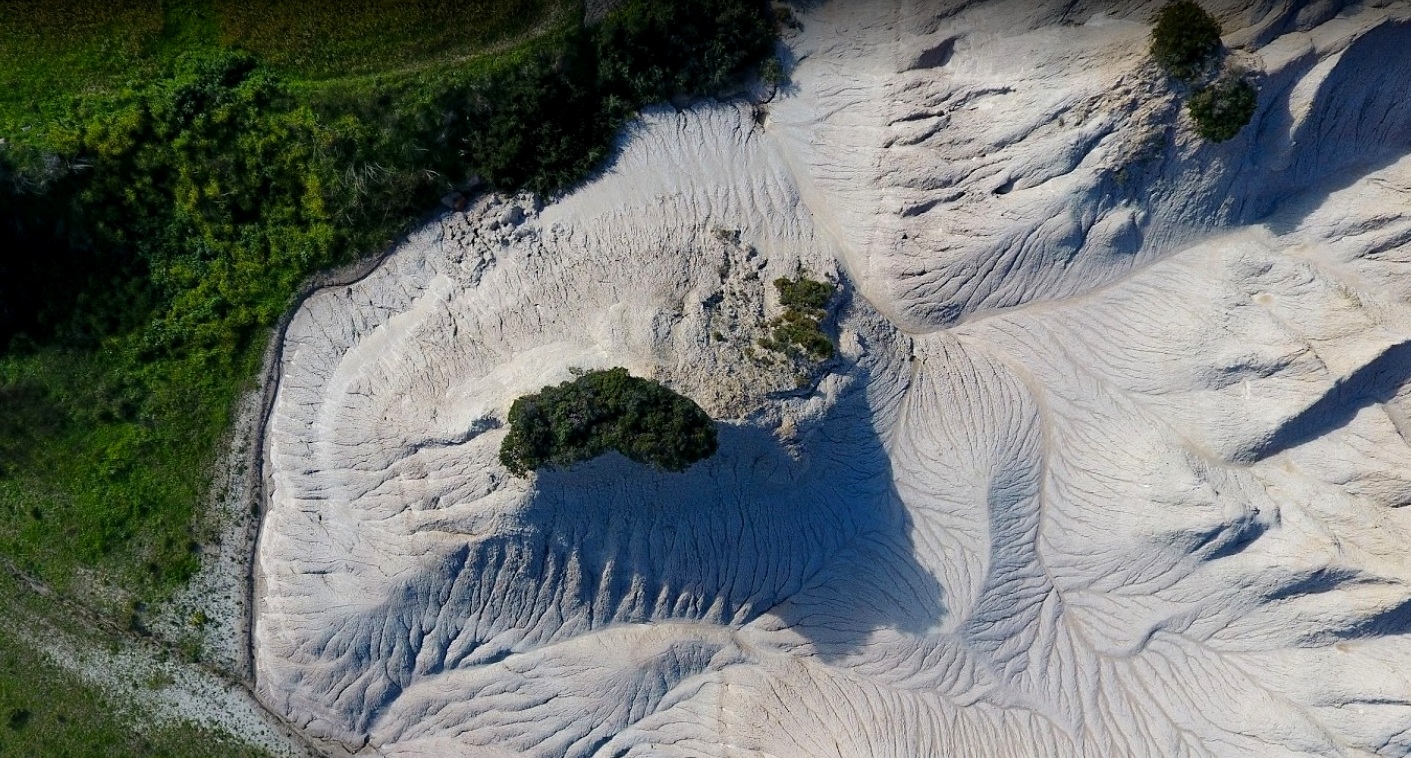
It took millennia of erosion from water and wind to create such an unusual landscape. Sometimes they call these mounds Greek Cappadocia or Meteora in Crete – one of the strangest and most bizarre places on the island.
The first study of the material from these mounds showed that they are sedimentary rocks accumulated more than 7 million years ago. They found marine fossils, including the remains of 15-meter sharks. To understand the genesis of this geological phenomenon, it is necessary to go back 10 million years ago, when the Mediterranean Sea was formed. Crete was then part of an archipelago. Its eastern part rose above the water, and the western one, on which Komolithoi is located, was under water. This explains the presence of marine fossils and the type of geological material from which the pyramids were built, but initial assumptions about their calcareous composition were not confirmed. The analysis showed that the rocks are cemented with coarse dust and so-called mudstone. In terms of mineralogical and chemical composition, mudstones are very similar to clays, but differ from them in greater hardness and inability to soak in water. These findings partly explained why the villagers removed this material from the pyramids and used it to seal the roofs of their homes in the surrounding villages before they could use cement for it.
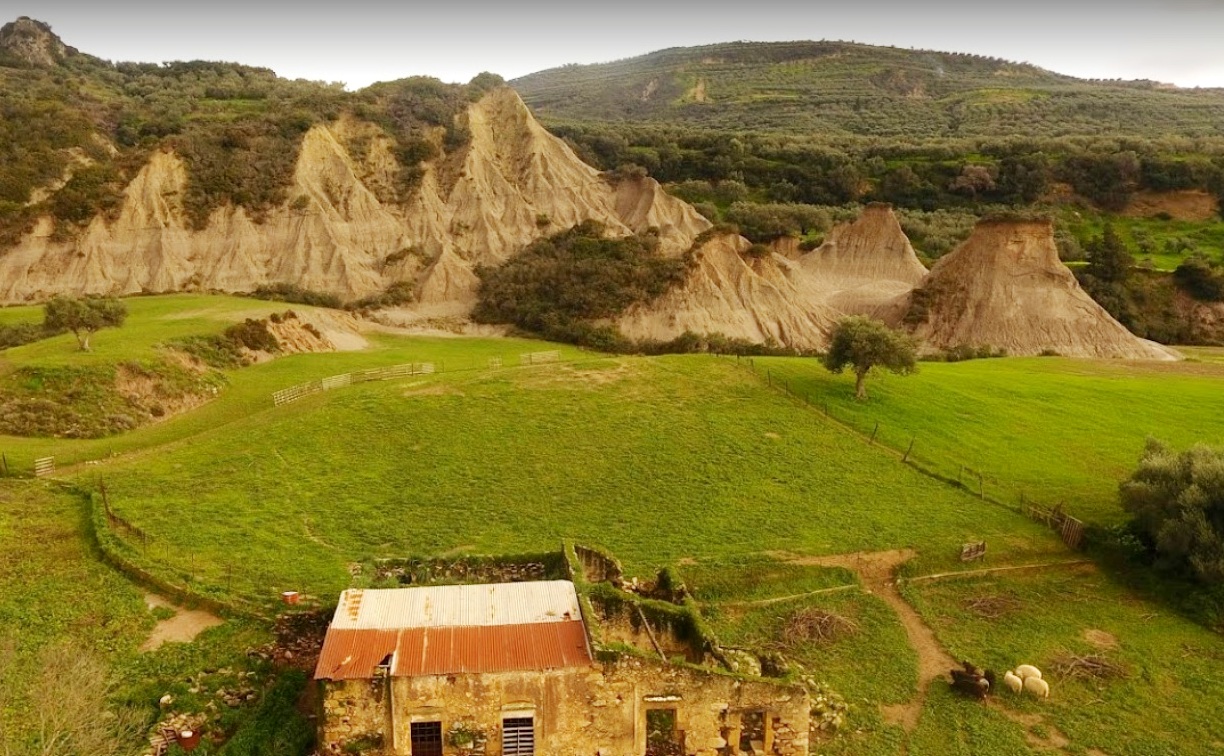
Researchers from the University of Crete, who carefully examined the site, also found traces of pyrite there. Mineral pyrite (in Greek πυρίτης λίθος – literally “stone that carves fire”) was nicknamed “fool’s gold”, “cat’s gold” during the gold rush due to its external similarity with gold.
But there are still more questions than answers; and Komolithoi again and again make tourists, fascinated by the “lunar” landscape, freeze with delight. They climb also the slopes of the “geological miracle”.
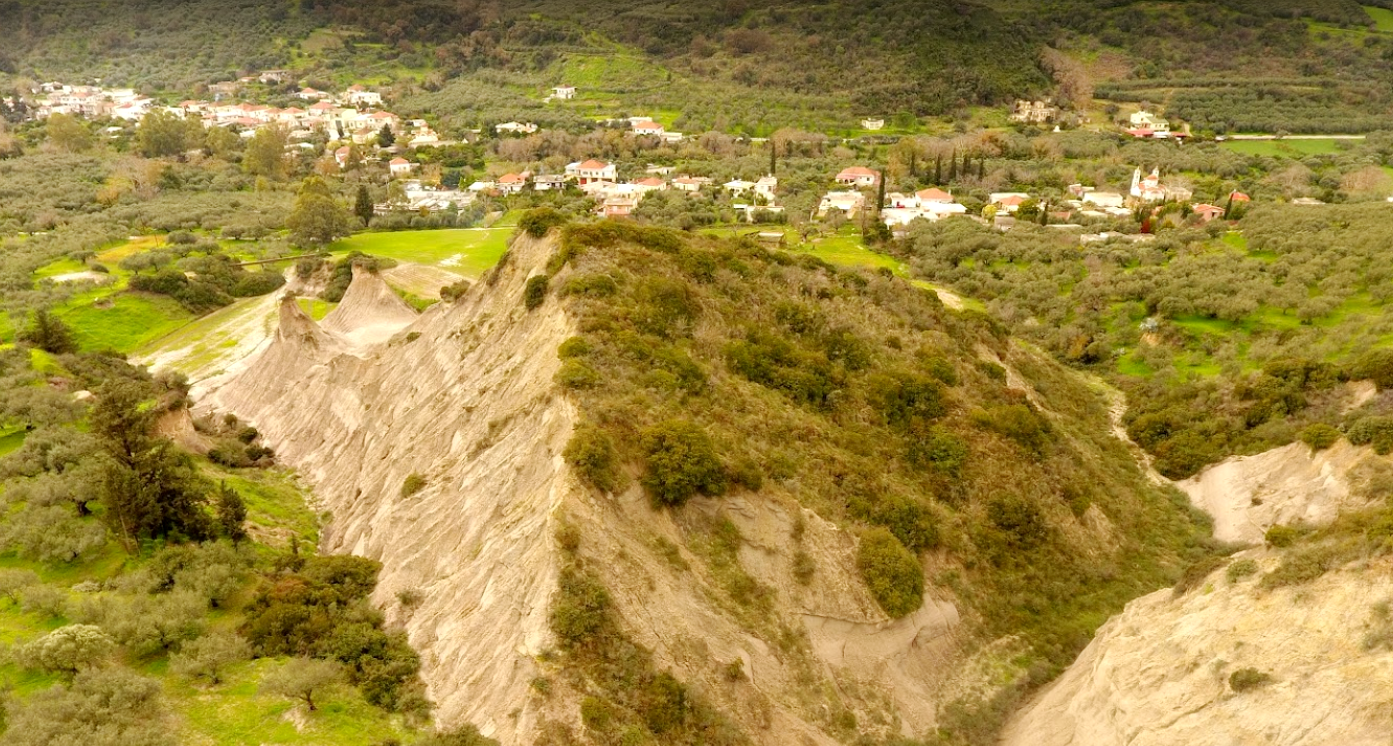
We propose to include this place in your map of Crete attractions. Moreover, there is no mention of Komolithoi in any well-known travel guide to Crete. If you are interested in photographs and want to see Komolithoi with your own eyes, you can visit it, for example, on the way back from Elafonissi beach. To do this, head back towards Kissamos and Chania through the Topolia Gorge and turn right at the end of Potamida village. Komolithoi is side by side there. There are from Kissamos to this village 6.5 km, and from Chania–about 35 km.
To find Google Maps coordinates: https://goo.gl/maps/WEcUnZove2RWn9xU6
A video: https://www.youtube.com/watch?v=vLeYvVMrko0
By Victor Dubrovsky, December 2020